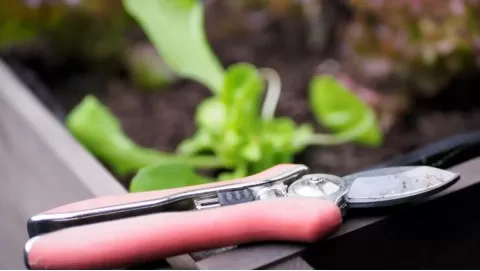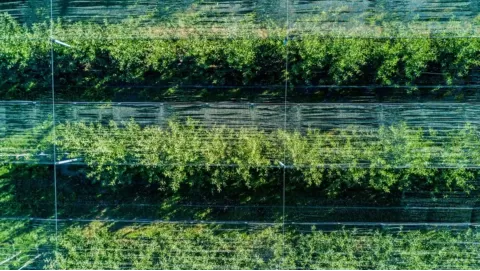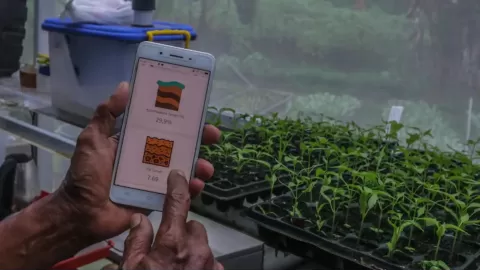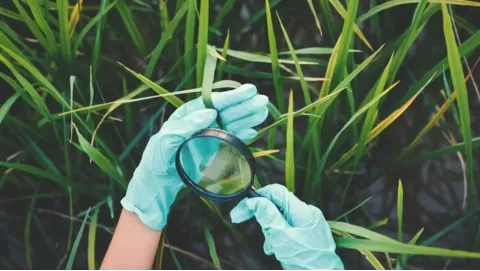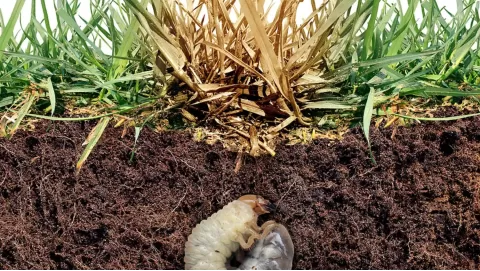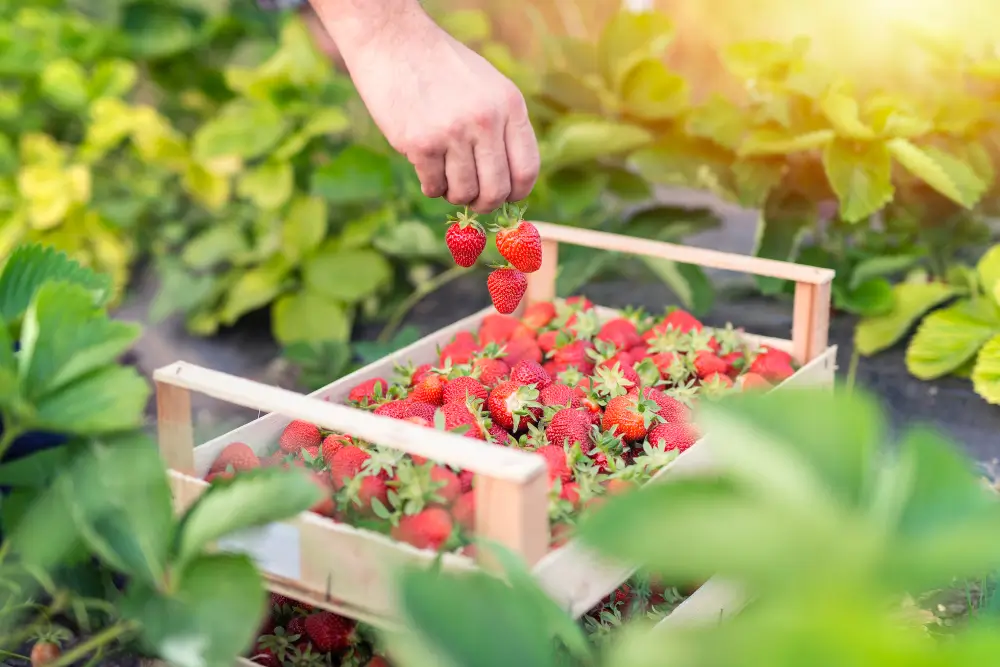
Growing hydroponic strawberries: A complete guide for fresh, flavorful harvests
Think about harvesting delicious, shiny strawberries from the garden during winter. With hydroponics, it can be done! Strawberry is one of the most favorite fruits and can be grown in various ways.
Strawberries are well-suited for hydroponics. There isa constant source of nutrition right at the root of the plants, and that can provide more flavor plus help your plant to grow better! Hydroponic systems don't rely on soil and take up less space than conventional farming.
Growcycle is reputable and trusted. They provide hydroponic guidance, equipment, and nutrients for commercial and home farming, as well as many products to accommodate various plant species and growing environments. This approach can mean a world of flavor. It’s easy to use whether you are a gardening novice or a gardening expert, even if you are growing strawberry plants hydroponically.
Basics of Hydroponics
Hydroponics is one way of growing plants with the aid of a water solution abundant in nutrients. This method is perfect for indoor gardening, as there's no soil involved. It can control the environment in which the plants grow, and it’s the perfect scenario for strawberries to get precisely what they need.
Setting Up the Hydroponic System for Strawberries
These are the steps gardeners want to go through when harvesting for hydro strawberries.
Step 1: Pick a Place to Plant
Pick a spot with plenty of light. Grow lights can be an option if natural sunshine is lacking. Well-ventilated areas to prevent mold and mildew are also important.
Step 2: Gathering Supplies
Farmers will require a hydroponic system. They’ll also require a nutrient solution, a pH tester, and, potentially, a dehumidifier and grow lights. They will also need strawberry plants or seeds. They will also have to find growing medium and plant containers.
Step 3: Get the System Ready
Put together the hydroponic device as indicated by the manufacturer to allow optimal growth of the plants. Combine a fertilizer solution into the water tank. Or bring the pH to the acidity range found in good strawberry soils.
Plantation of Hydroponic Strawberries
When the system is set, it is time to plant the strawberries. Hydroponic strawberry plants may either be grown from seeds or transplanted, depending on the preference of the grower. Although seeds are less expensive than transplants, transplants are easier and quicker to produce.
Planting Through Seeds
Place the seeds in a growing medium, and keep them hydrated to germinate. After they get a few true leaves, you can move the seedlings into your hydroponics system.
Using Transplants
If transplanting, carefully shake away from soil, and wash. Put the transplants into the hydroponic grow system. A root must be immersed in the nutrient solution.
Related: Garden care products for sale
Nutrient Management for Hydroponic Strawberries
Once the strawberries are planted, it’s time to feed them!
Essential Nutrients
Strawberries require an even nutrient solution. It has got to include nitrogen, phosphorus, potassium, calcium, and magnesium. It also needs trace elements. The easiest way to ensure plants get what they need is to use premixed hydroponic nutrients.
Check and Adjust the pH Levels
An optimal pH level is essential for the absorption of nutrients. Frequently check the pH of the nutrients, making adjustments when needed. Strawberries prefer a pH of 5.5-6.5.
Changing the Nutrient Solution
The nutrient solution should be changed every two weeks to prevent any imbalance of nutrients and the build-up of toxic salts. Be sure to rinse the reservoir completely before refilling with new solution.
Light and Temperature Requirements for the Growth
Growers cannot overlook the requirements for light and temperature. They are crucial to successful hydroponic strawberries. You see, for them to bear fruit they need a ton of light. Get 8 to 12 hours of light per day. If growing indoors, utilize full-spectrum grow lights that replicate the sunlight. And they grow best in a temperature range of 60- 80°F (15-27°C).
For plants, avoid exposing them to very hot or very cold conditions as this may stress them and decrease their output. Don’t forget to keep your humidity reading 50%-70%. Good airflow is critical for avoiding mold and mildew. Use humidifiers to maintain a fresh atmosphere and move air around.
Pollinating the Hydroponic Strawberries
Strawberry plants require pollination to bear fruit. Outdoors in the garden, pollinators like bees do this work for you. In an indoor hydroponic system, the flowers need to be pollinated by hand.
Manual Pollination Techniques
Cotton swabs and tiny, soft brushes are good tools to utilize when it comes to transferring pollen from bloom to bloom. Approach carefully so as not to damage the delicate flowers. Repeat this every single day during the flowering season.
Promote the Use of Natural Pollinators
If people are growing strawberries in a greenhouse or outdoors hydroponically, they should also plant flowers nearby that attract bees and other pollinators, the researchers advise. This will bring the native pollinators in.
Harvesting the Hydroponic Strawberries
Fully red strawberries are now available for the picking. Twist the berry off the tip to minimize damage to the plant. Harvest the plants frequently during peak season to encourage high fruit yields. Hydroponically grown strawberries, once harvested, are the same as any other.
Benefits of Hydroponic Strawberries
There are various benefits of hydroponic strawberries. Here are a few examples:
All Year Production: Growing strawberries hydroponically allows you to grow strawberries any time of year, which is one of the great benefits of this method. When it comes to soil-based methods, your ability to grow strawberries is limited to specific times. They are weatherproofed.
Increased Yields: Plants get a constant supply of nutrients from hydroponics. They allow you to get a higher yield compared to soil cultivation. Controlled conditions also reduce the risk of disease and pests.
Conserves Water: Hydroponic systems outperform soil-based farming techniques when it comes to water usage. The water is recirculated within the system, so no water is wasted, thus setting an ecological standard.
Better Quality Strawberries: Hydroponic strawberries are fresh and healthy in comparison to soil strawberries. The reason for this is that the environment is so carefully controlled, the risk of diseases from the ground is reduced, and the nutrition supply can be maximised.
Related: Celsius Herbicide: Application Tips and Best Practices
Common Issues and Solutions for Hydroponic Growth
Although harvesting strawberries through hydroponics is simple, it can cause some challenges to the growers.
Dealing with Pests
Pests are less likely to come into contact with hydroponic systems; however, they can happen. To control pests, gardeners are advised to use natural insecticides or introduce other beneficial insects like ladybugs.
Preventing Diseases
It is well known that the spaciousness and cleanliness of gardens help prevent unsightly diseases. Just keep an eye out for sickly looking plants as they will need to be removed.
Resolve Nutrient Lack Issue
Undernutrition symptoms may include yellow leaves, weak growth, and poor fruiting. Often, these problems can be rectified by tweaking the nutrient solution and pH.
FAQS
Is growing strawberries hydroponically difficult?
Not at all! There’s a learning curve, but hydroponic systems are actually very user-friendly. With the right setup and a little patience, almost anyone can grow hydroponic strawberries successfully.
What is the cost of installing a hydroponic strawberry garden?
Initial cost can be relatively low – a simple system can be established for a couple of hundred dollars (although it may cost more once everything is installed). This includes a hydroponic system, nutrient solution, and lighting if needed.
Can hydroponic strawberries be grown indoors?
Absolutely! One of the greatest benefits of hydroponics is its use for indoor farming. Just make sure to keep plants well-watered and at the proper temperature.
The Bottom Line
It's obvious that growing strawberries hydroponically has transformed farming methods. It has many advantages. Companies like Growcycle support it. It is a practical choice for residential and commercial cultivation.
So why not give it a go and enjoy the benefit of growing strawberries hydroponically. Share your views in coments.
Disclaimer: This material is for informational purposes only and should not be relied on for legal, medical, financial, or any other form of professional advice.







